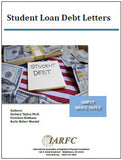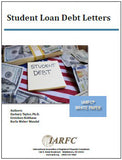Student Loan Debt Letters (White Paper)
Using data from the 2017 U.S. Survey of Household Economics and Decision making (SHED), this study classifies student debt into three categories by beneficiary (self, spouse, and children) and examines the relationship between each category and financial well-being. The results show that the association of student debt with the financial well-being of borrowers is negative and significant, regardless of whether the loan is used to finance the education of the borrower, spouse, or children.
The white paper further provides evidence that the marginal effect of student debt on the financial well-being of the borrower is substantial when the debt is used to finance the education of children rather than the education of the borrower or the borrower’s spouse.
The implications of the study for practitioners are discussed.
Authors:
Zachary Taylor, Ph.D.
Gretchen Holthaus
Karla Weber Wandel
Table of Contents:
How Institutions Deliver Debt-Related Messaging to College Students, Purpose of the Study, Guiding Research Questions, Significance of the Study, Review of the Literature, Research on Debt Letter Outcomes, Review of Debt Letter Findings To-Date, Readability of Financial Aid Information, Research Related to Debt and Borrowing Among College Students, Research Methodology, Linguistic Analysis of Student Debt Letters, Findings, Discussion, Conclusion








